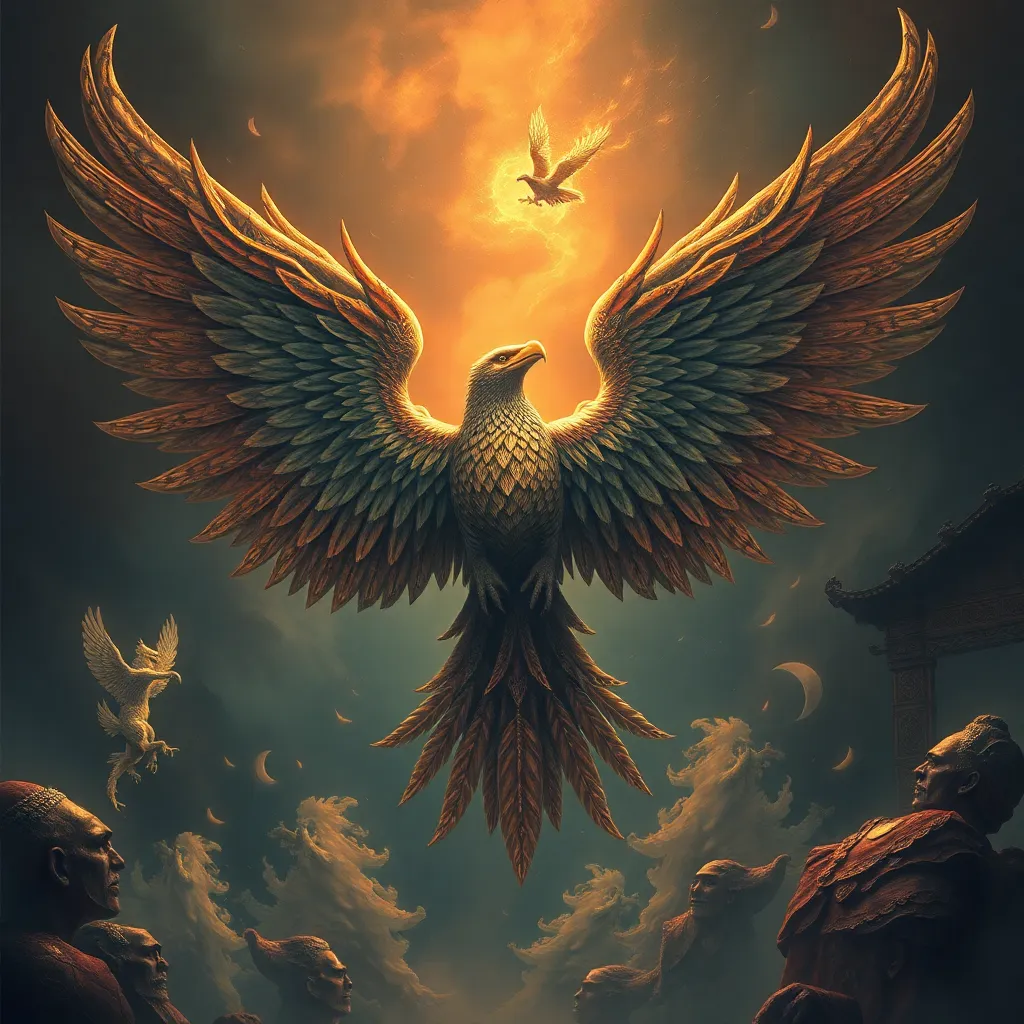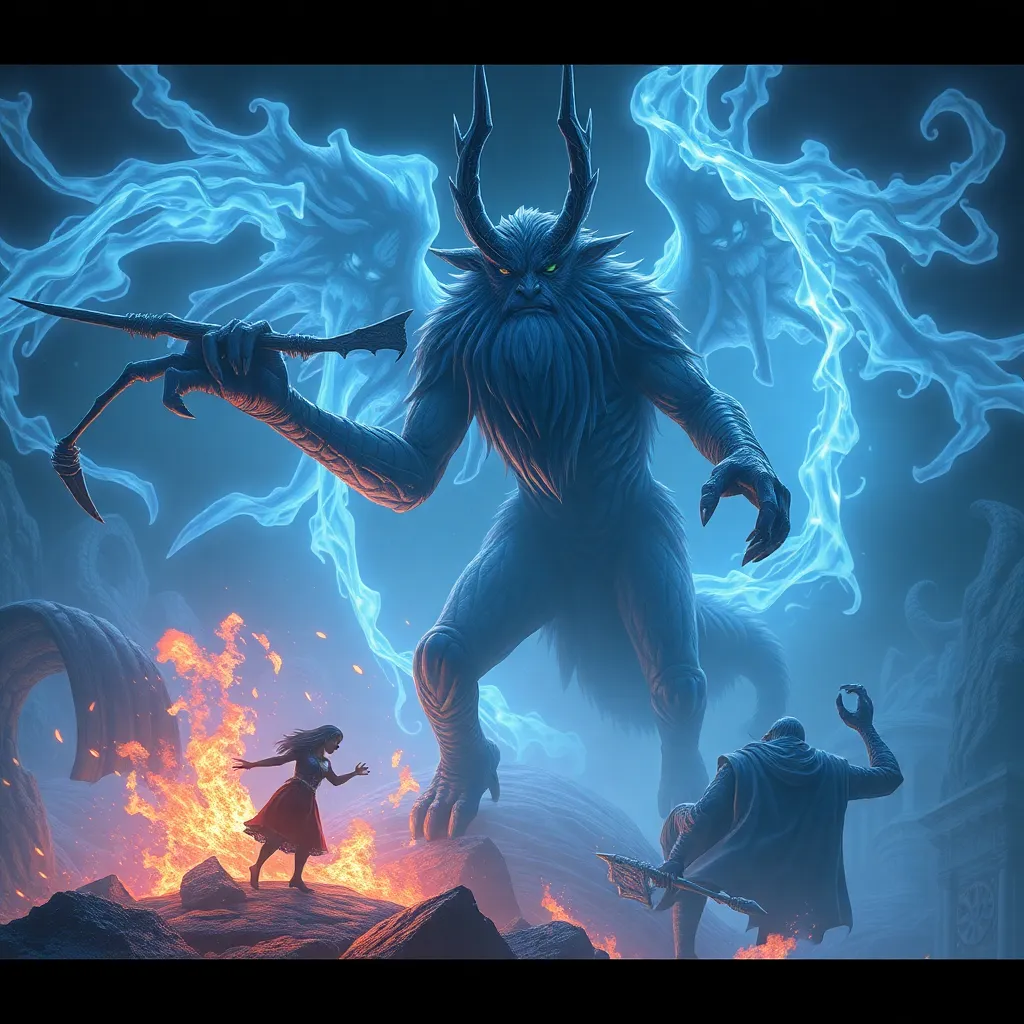The Legend of Garuda: A Collection of Ancient Tales and Folk Stories
I. Introduction to Garuda
In the vast tapestry of mythology, few figures are as majestic and revered as Garuda. This mythical bird, often depicted as a man with wings or as a massive eagle, holds a significant place in various cultural narratives across Asia. Garuda is not merely a character in folklore; he is a symbol of strength, loyalty, and divine protection.
Garuda’s importance transcends geographical boundaries, appearing in Hinduism and Buddhism, where he is celebrated for his valor and commitment to protecting the divine order. This collection of tales seeks to illuminate the multifaceted nature of Garuda, exploring his origins, adventures, and enduring legacy across different cultures.
II. Origins of the Garuda Legend
The origins of the Garuda legend can be traced back to ancient texts, including the Vedas and Puranas in Hindu mythology. Garuda is often described as the king of birds and serves as a vehicle for Lord Vishnu, one of the principal deities in Hinduism. The significance of Garuda is further enhanced in Buddhist tradition, where he is depicted as a protector of the Dharma.
In both traditions, Garuda symbolizes the triumph of good over evil. He is often associated with the sun, representing light and the dispelling of darkness. As a deity and mythological creature, Garuda embodies a rich symbolism:
- Strength and Power
- Wisdom and Knowledge
- Vigilance and Protection
III. The Tale of Garuda’s Birth
The birth of Garuda is steeped in prophecy and destiny. According to legend, he was born to the sage Kashyapa and his wife Vinata. The story unfolds with a powerful prophecy that foretold Garuda’s potential to become a formidable being capable of challenging the gods themselves. This theme of struggle and destiny is central to Garuda’s narrative, highlighting the eternal conflict between good and evil.
As Garuda grew, he became aware of his immense strength and the responsibilities that came with it. His journey from a hatchling to a powerful deity serves as a metaphor for personal growth and the discovery of one’s purpose in life.
IV. Garuda and the Quest for Amrita
One of the most celebrated tales involving Garuda is his quest for Amrita, the nectar of immortality. In this story, Garuda embarks on a perilous journey to obtain Amrita for his mother, who had been imprisoned by the gods. This quest is fraught with challenges, including confrontations with various celestial beings and overcoming treacherous obstacles.
The moral lessons embedded in this tale are profound:
- The importance of selflessness and sacrifice.
- The value of determination in the face of adversity.
- The quest for knowledge and enlightenment.
Garuda’s unwavering resolve to secure Amrita not only highlights his loyalty but also serves as an inspiration for countless generations to pursue their goals with courage and perseverance.
V. Garuda’s Role as a Protector
Garuda’s position as the vehicle of Lord Vishnu cements his role as a protector of the cosmos. In many legends, he is depicted as a fierce warrior who defends the heavens against malevolent forces. His protective nature is a recurring theme, with many stories showcasing his bravery and loyalty to the divine.
Throughout history, Garuda has been represented in various forms of art and literature:
- In sculpture and paintings depicting him in battle.
- In literature, where his tales are told to inspire courage and strength.
- In traditional performances, where he is a central character in folklore.
VI. Regional Variations of Garuda Stories
Garuda’s tales are not confined to a single narrative; they vary significantly across regions. In India, Garuda is primarily associated with Hindu mythology, while in Indonesia, he is regarded as the national emblem, symbolizing strength and independence.
Some unique attributes and interpretations of Garuda include:
- In Hinduism, he is often portrayed as a compassionate figure who aids devotees.
- In Indonesia, he is celebrated in the national myth, representing unity and resilience.
- Southeast Asian cultures often depict Garuda in local folklore, blending traditional stories with his legendary persona.
This blending of local folklore with the Garuda legend illustrates the adaptability of mythological figures and their ability to resonate with diverse cultural identities.
VII. Garuda in Modern Culture
In contemporary times, Garuda’s influence extends beyond traditional narratives. His image appears in various forms of media, including literature, films, and even video games, showcasing his timeless appeal. Additionally, Garuda has become a symbol in national emblems, most notably in Indonesia, where he represents the spirit of the nation.
The symbolism of Garuda continues to be relevant in modern spirituality, often invoked in practices that seek protection and empowerment. His tales inspire individuals to embrace their strength and courage in facing life’s challenges.
VIII. Conclusion
Garuda’s significance across cultures is a testament to the enduring nature of myth. His stories, filled with themes of bravery, sacrifice, and protection, resonate with audiences both ancient and modern. The rich tapestry of Garuda mythology invites us to explore the depths of our heritage and appreciate the universal values embedded in these tales.
As we delve into the legend of Garuda, we are reminded of the power of storytelling and the cultural connections that bind us, encouraging a deeper understanding of our shared human experience.



